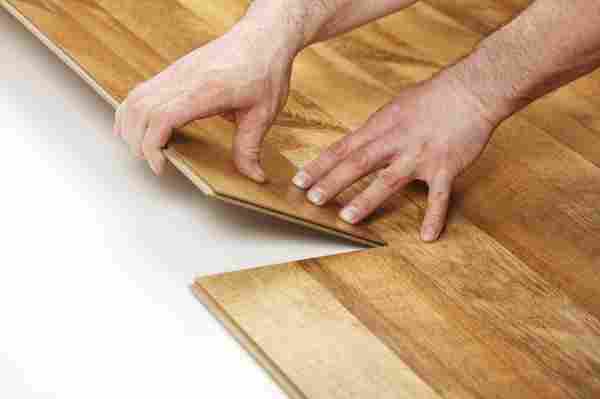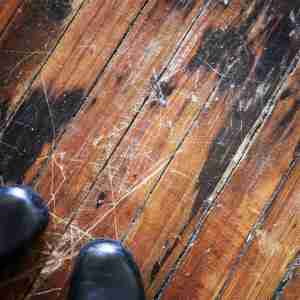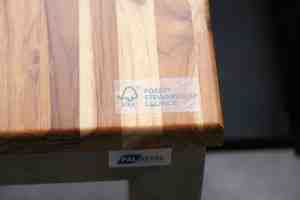June 02,2022
Hardwood Floor vs. Laminate: Which Flooring Gives the Biggest Bang for Your Buck?
by Jennifer Cameron inMediterranean Style
Do you enjoy the smell of rich mahogany? Are your bookshelves adorned with many leather-bound books? While your home improvement budget might not match that of legendary news anchor Ron Burgundy, it is still possible to obtain the look of that rich mahogany floor without the actual cost of a hardwood floor replacement.
The secret is to use hardwood floor alternatives, like laminate flooring, that can replicate the look of any species of hardwood without the added expense of installation, maintenance, and repairs. But even though these alternatives to hardwood floors exist, real hardwood remains hugely popular among homeowners. Here we take a close look at hardwood floors and their laminate counterparts to see what the real pros and cons are, allowing you to decide which material is the right fit for your floor.
Flooring Prices
Hardwood floors generally cost more than laminate wood flooring based purely on the fact that hardwood is harvested from actual trees. According to Angie’s List, the cost of quality hardwood flooring starts at a minimum of $7 per square foot and rises to over $30 per square foot for exotic hardwoods imported from abroad. And that’s not including the cost of installation which will cost an additional $2-$4 for every square foot.
On the other hand, laminate flooring costs just $1-$3 per square foot and can be installed by a professional at the lower end of the rate scale. Installing laminate floors can also be an easy DIY project if you choose to use glueless laminates with interlocking sections, cutting out the cost of installation altogether.
Durability
There are two different types of hardwood floors: solid and engineered. Solid hardwood floors are made from real wood that attaches directly to your wood subfloor. Solid hardwood floors are vulnerable to water damage, as any amount of moisture can cause the wood to warp, cup, or split. This can be costly to repair, especially if your home suffers flood damage.
That’s where engineered hardwoods come in. These planks are layered with real wood on top and plywood sections below, which help prevent the warping and distortion that solid hardwood floors are prone to. What’s more, they don’t have to be nailed or glued down, providing even more flexibility than solid hardwoods. What’s more, both solid and hardwood floors can be refinished multiple times to remove abrasions and scratches.

Engineered hardwood floors are more robust than solid hardwood, reducing upkeep and cost. Image: Crystal Flooring CC by 4.0
Laminates are arguably the more durable option since they are built to stand up to everyday wear and tear. That’s why some homeowners opt for laminated flooring in high-traffic areas. However, if you let dust and grime build up on a laminated floor it can act as an abrasive, necessitating routine vacuuming and cleaning. And unlike hardwood floors, laminated flooring can’t be refinished.
Flooring Repair Costs
According to The Home Depot’s Pro Referral program, the average cost of repairing a wood floor is $362. The price will vary based on the amount of flooring that needs to be repaired and the significance of the damage. A few odd blemishes or abrasions won’t cost much more than $200, but extensive damage that requires refinishing the entire floor can cost as much as $647.

Repairing hardwood usually costs a bit more than laminate because of the cost of materials and labor. Image: Heather Fowler CC by 2.0
On the laminate side, the average repair job costs $307, a full $55 less than the average cost of repairing a hardwood floor. Repairing small nicks, scrapes, and blemishes usually cost around $150, while major repairs for sections of laminate that are warped or loose can run as high as $561.
Environmental Impact

The Forest Stewardship Council certifies timber harvested from sustainable new growth forests. Alex Rio Brazil CC by 3.0
Hardwood floors are not as detrimental to the environment as you might suspect. The majority of wood used in flooring is sustainably sourced from new growth forests certified by the Forest Stewardship Council (FSC). This ensures that demand for hardwood floors does not deplete stocks of endangered species or natural habitats. That being said, you should still verify with your supplier or contractor that the wood you’re using is FSC certified.
With laminate flooring, you don’t have to worry about sourcing. Since laminates are synthetic they do not use up natural resources the same way natural hardwood floors, or even tiles, do. In fact, the product core is 74% recycled wood waste, such as sawdust or wood chips, from logging facilities. You can also find variants of laminate flooring that are NALFA Certified, ensuring that their manufacture was derived from recycled content and does not require special glues or adhesives that can be detrimental to air quality.
All that being said, the choice between a hardwood floor and a laminate one really comes down to aesthetics. If you want the authentic feel of real hardwood beneath your feet, then maybe some exotic bamboo planks are right for you. But if you just want the look of a hardwood floor without the upfront cost, then a laminate floor will look just as nice and possibly even last longer if you have a very active household.
—
When it comes time to rip up your old floorboards and lay down some fresh cedar, call Budget Dumpster to order a cheap dumpster rental . All you have to do is toss the old boards in and we’ll haul away your previous flooring for you! And if you’ve really caught remodeling fever, check out our DIY home improvement guide for more flooring tips and advice for everything else home improvement.
